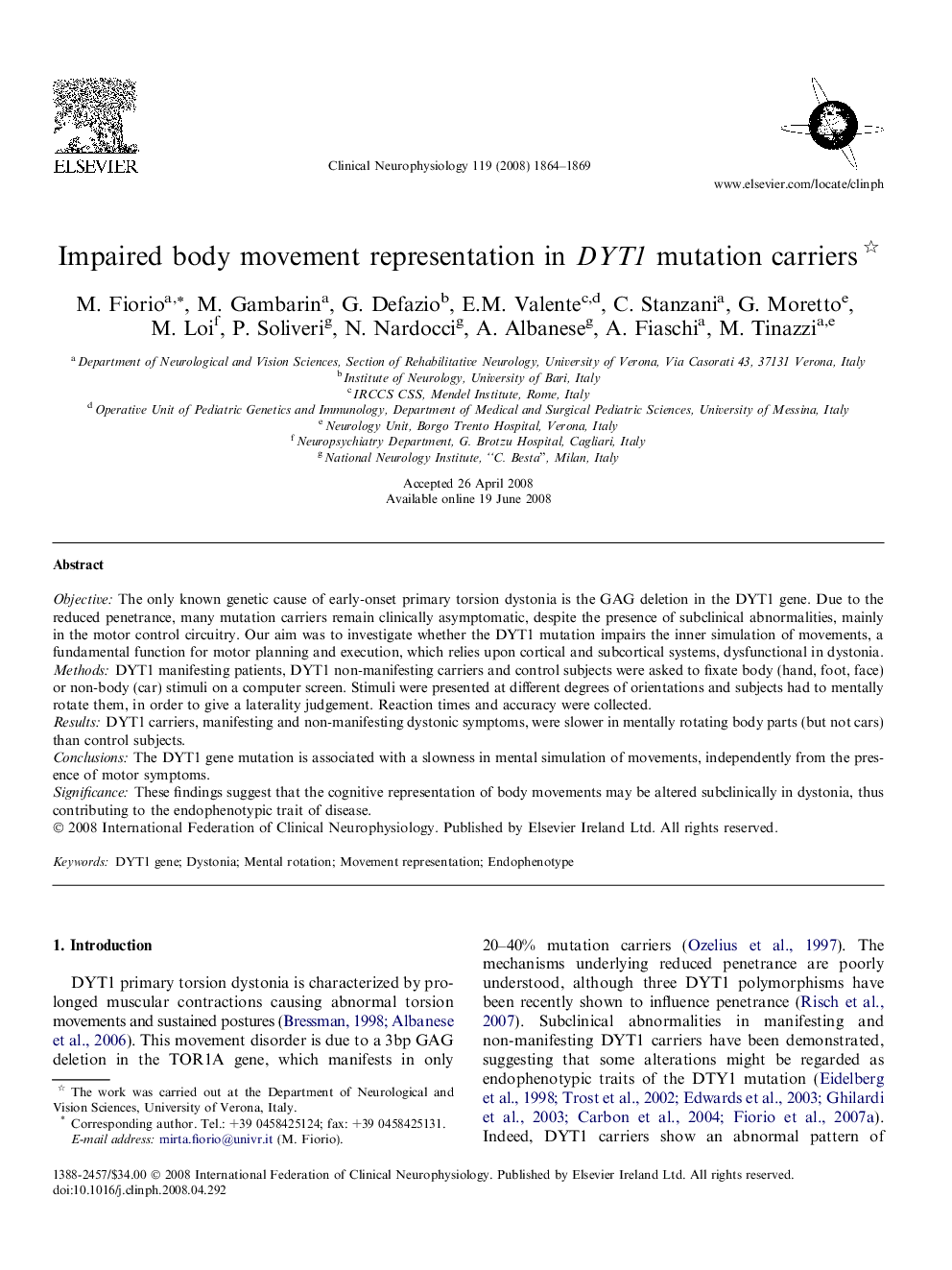| Article ID | Journal | Published Year | Pages | File Type |
|---|---|---|---|---|
| 3047756 | Clinical Neurophysiology | 2008 | 6 Pages |
ObjectiveThe only known genetic cause of early-onset primary torsion dystonia is the GAG deletion in the DYT1 gene. Due to the reduced penetrance, many mutation carriers remain clinically asymptomatic, despite the presence of subclinical abnormalities, mainly in the motor control circuitry. Our aim was to investigate whether the DYT1 mutation impairs the inner simulation of movements, a fundamental function for motor planning and execution, which relies upon cortical and subcortical systems, dysfunctional in dystonia.MethodsDYT1 manifesting patients, DYT1 non-manifesting carriers and control subjects were asked to fixate body (hand, foot, face) or non-body (car) stimuli on a computer screen. Stimuli were presented at different degrees of orientations and subjects had to mentally rotate them, in order to give a laterality judgement. Reaction times and accuracy were collected.ResultsDYT1 carriers, manifesting and non-manifesting dystonic symptoms, were slower in mentally rotating body parts (but not cars) than control subjects.ConclusionsThe DYT1 gene mutation is associated with a slowness in mental simulation of movements, independently from the presence of motor symptoms.SignificanceThese findings suggest that the cognitive representation of body movements may be altered subclinically in dystonia, thus contributing to the endophenotypic trait of disease.
